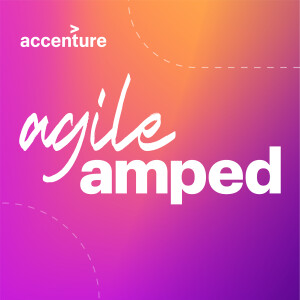
Agile Amped Podcast - Inspiring Conversations
Business:Management

Diana Larsen is in the Zone with the Agile Fluency Model at Agile2015
 2015-08-20
2015-08-20
Download
Right click and do "save link as"
In our journey to help create "more productive, humane, sustainable work places", we in the Agile community often have a tendency to look for a one-size-fits-all solution. But Agile transformations are as unique as the snowflakes requiring them. Diana Larsen's Agile Fluency model, which the industry veteran and pioneer discussed with us at Agile2015, offers a range of possible ways of operating to suit client and even practitioner needs.But first she wanted to clear up a common misconception: The Agile Fluency model isn't a maturity model. Diana shared. "It's a best-fit model... Getting to the end of the scale isn't necessarily the right place to be." The Agile Fluency model, then, can be thought of as having four bus zones: you have to go through each zone to get to subsequent zones -- but Zone 1 may be the best place for you to be, in which case you get off the bus and thrive there. The Agile Fluency model aims to help organizations identify the benefits and tradeoffs they are willing to make and then help them locate the zone in the model that maps best to the identified criteria.
view more
More Episodes
The omni-connected agile leader
 2022-10-19
2022-10-19
 2022-10-19
2022-10-19
Winning Business Strategies are Adaptive
 2022-08-22
2022-08-22
 2022-08-22
2022-08-22
Identify your passions to change the world
 2022-07-11
2022-07-11
 2022-07-11
2022-07-11
Elevating Black and Brown Voices in Agile
 2022-04-25
2022-04-25
 2022-04-25
2022-04-25
A Vision for Business Agility in Nigeria
 2022-04-05
2022-04-05
 2022-04-05
2022-04-05
Six Enablers of Business Agility
 2022-02-28
2022-02-28
 2022-02-28
2022-02-28
Mental Health in the Agile Space
 2022-01-24
2022-01-24
 2022-01-24
2022-01-24
Defining Agility in Terms of Risk
 2021-07-19
2021-07-19
 2021-07-19
2021-07-19
Pride at Accenture
 2021-06-21
2021-06-21
 2021-06-21
2021-06-21
Pride and Intersectionality in Leadership
 2021-06-07
2021-06-07
 2021-06-07
2021-06-07
Innovation and Leadership for Humanity
 2021-05-17
2021-05-17
 2021-05-17
2021-05-17
Cloud Breaks Barriers to Agility
 2021-04-05
2021-04-05
 2021-04-05
2021-04-05
Riot Games Makes it Better to be a Player
 2021-03-08
2021-03-08
 2021-03-08
2021-03-08
Modern Management Made Easy
 2021-02-22
2021-02-22
 2021-02-22
2021-02-22
012345678910111213141516171819
Create your
podcast in
minutes
- Full-featured podcast site
- Unlimited storage and bandwidth
- Comprehensive podcast stats
- Distribute to Apple Podcasts, Spotify, and more
- Make money with your podcast
It is Free
- Privacy Policy
- Cookie Policy
- Terms of Use
- Consent Preferences
- Copyright © 2015-2024 Podbean.com




